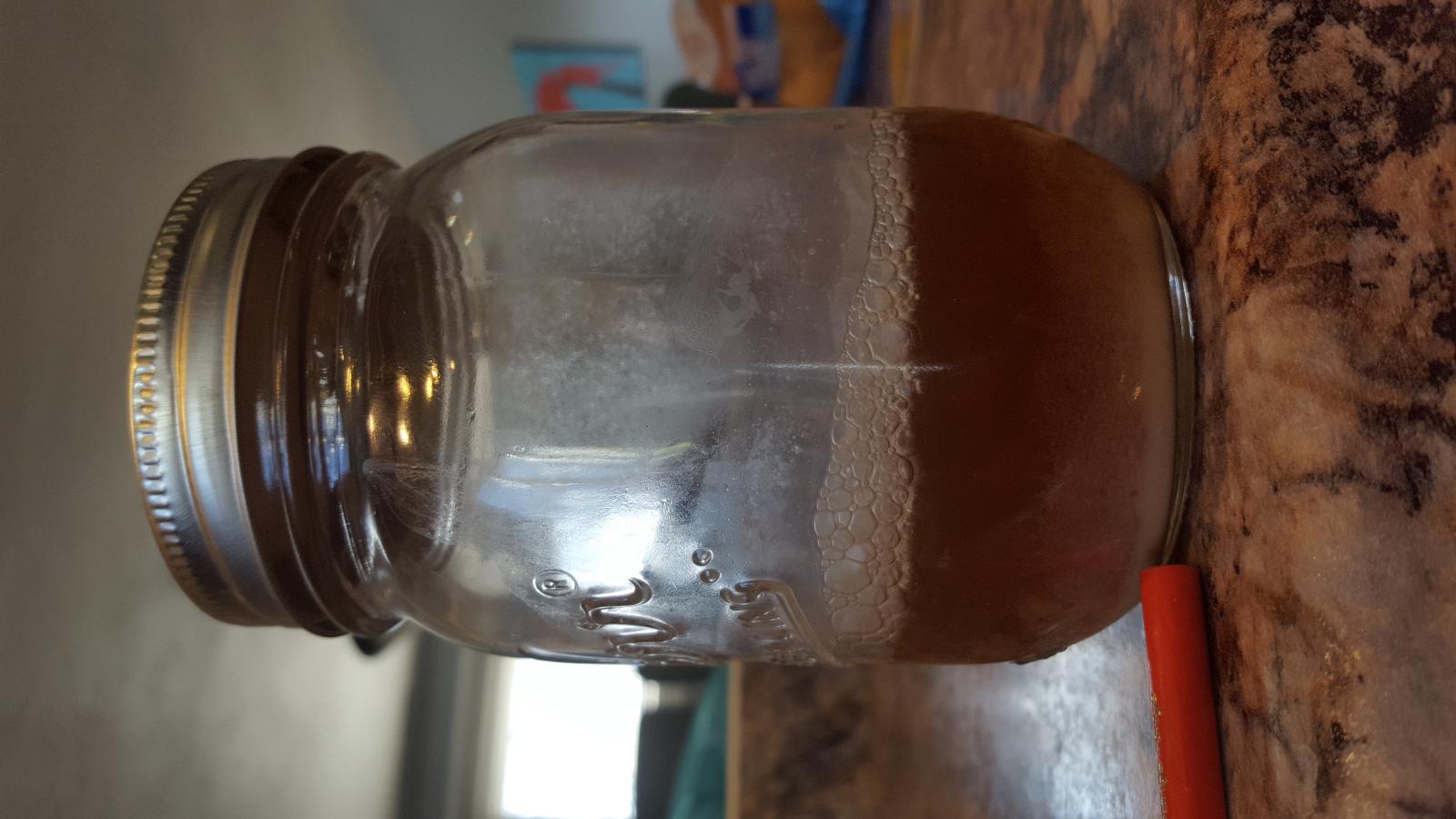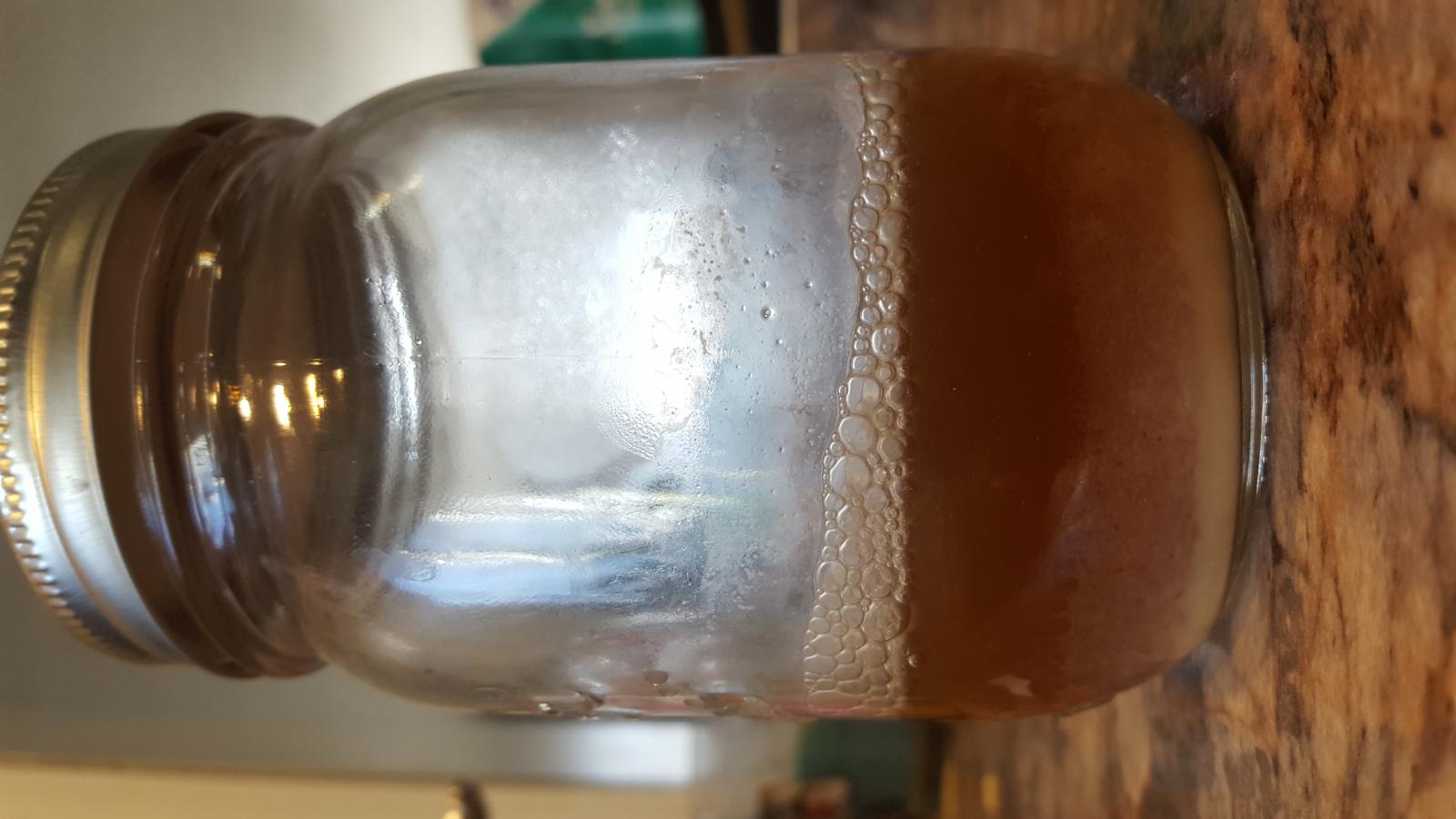Sillybilly
Well-Known Member
I left out a hydrometer sample over night and thought why not try to capture some yeast, so I put the sample in a pint mason jar without a lid for a couple of days and noticed some slight activity going on so I put the lid on but loose enough it could release CO2. I noticed it had a smell that kind of like an overly ripe
pineapple, fruity with a little funkiness (excuse my limited descriptors) and to my surprise didnt see any mold growth or smell any decaying/poopy flavors. Fast forward, to 2 days ago (8-9 days since leaving out) and it has a small krausen forming and much more activity. There is also a small (yeast?) cake that fully covers the bottom of the jar.
My plan is to use this jar to inoculate one gallon to grow it up and see what happens. Should I just pitch it in the next couple of days or wait a little longer? I may try to taste it but there is such a small amount (maybe 4oz?) I dont want to disturb it for such a small taste so I figured one-gallon of wort out of something I was already going to brew isnt going to hurt the bank or take up much space anyways. Any other useful advice would be appreciated, Thanks!
My plan is to use this jar to inoculate one gallon to grow it up and see what happens. Should I just pitch it in the next couple of days or wait a little longer? I may try to taste it but there is such a small amount (maybe 4oz?) I dont want to disturb it for such a small taste so I figured one-gallon of wort out of something I was already going to brew isnt going to hurt the bank or take up much space anyways. Any other useful advice would be appreciated, Thanks!




